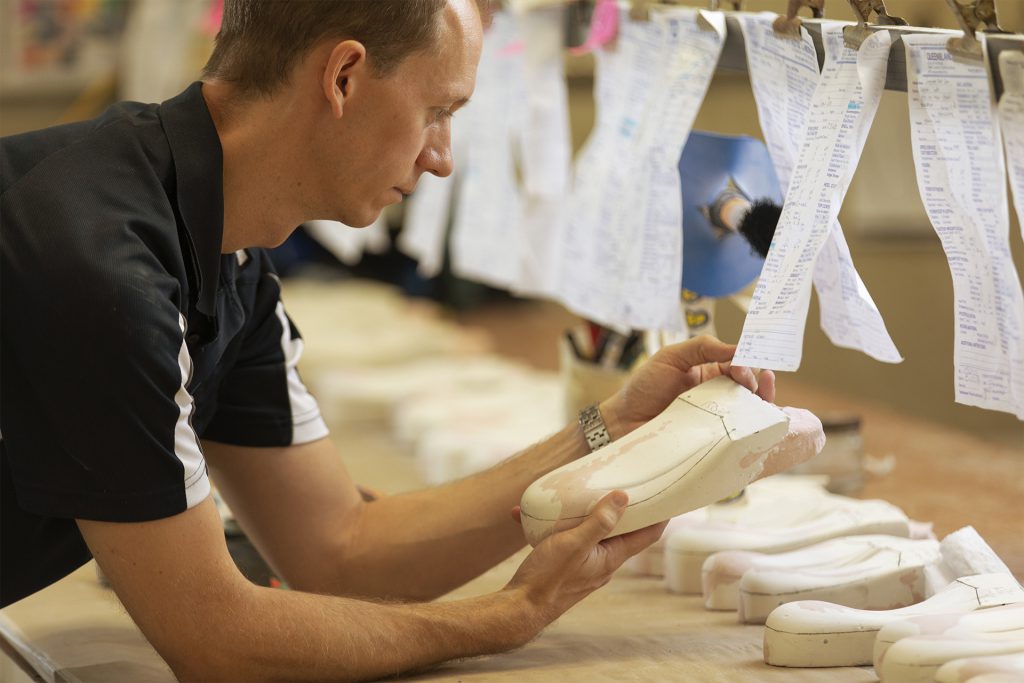What Does A Podiatrist Do At An Orthotic Lab?
One of the common questions colleagues ask is “what exactly do you do at the lab?”. Whilst you don’t get the instant feedback that you get when treating patients, it’s rewarding getting to work with other podiatrists and knowing that your work is influencing hundreds of patients on a daily basis. We’ve got a fantastic team of orthotic technicians, most of whom have honed their skills over many years to really become master craftspeople, who do all of the hands on work. So what value does having a podiatrist at the lab give you and your patients?
1. Discussing Individual Cases With Podiatrists
We consult with most of our clients (both experienced and inexperienced) on a regular basis about their patients. Some are particularly tricky – think rare genetic disorders, complex neuromuscular diseases, amputations and complex post-surgical cases just to name a few. It’s not uncommon to receive videos and photos to help us understand the patient’s needs. Getting to help our clients and their patients is a really enjoyable part of the job.
2. Cast/Scan Evaluation
Whether our clients send us physical casts or digital scans we go through the same evaluation process. This is an important step in the process as it allows to be the link between the clinician and the technician. We assess both feet for lengths, widths (at the heel, midfoot and forefoot), arch heights, forefoot to rearfoot relationship and any other anomalies. So if one foot is lower and longer than the other foot, that information is communicated through to our technicians and the podiatrist. This way, when the podiatrist gets the orthotics back and they don’t ‘match’, they can see why that’s the case. We’ll also determine the appropriate metatarsal head bisections which helps to drive the shape of the finished orthotic.
It’s also an opportunity for us to troubleshoot any problems at the front end. We’d prefer to address any potential problems at this point, rather than making up a device and sending it back to the podiatrist only for them to think “this wasn’t what I was after”. For example, if we see set of casts from a patient with Charcot-Marie-Tooth disease with the typical cavo-varus deformity and the prescription has a 10° inverted pour, medial heel skive and 4° extrinsic rearfoot varus post, you can bet your bottom dollar that we’ll call the podiatrist to discuss the case.
3. Quality Control
Every orthotic and brace that leaves QOL is checked over by a podiatrist. We go over every detail of the prescription form with a fine tooth comb to ensure that firstly we’ve made the orthotic to the prescription (nothing has been missed etc) and secondly that it meets the high QOL standard. We want to ensure that when the podiatrist pulls the orthotics out of the bag, it’s exactly what they wanted when they were writing the script. We also ensure that when the patient sees the orthotic (and invariably pulls them out of their shoes when they get home and have a close inspection of them), they can see that they’re getting not only getting a great functioning orthotic, but also one that’s made to the highest quality and workmanship.

4. Keeping Up To Date With Orthotic Trends & Technology
As the experts in the field, it’s our job to keep up to date with the latest materials to ensure we continue to offer our clients the best options available. Suppliers are constantly giving us samples of new materials to trial. If we think a new material will be useful for our clients, we’ll go through rigorous internal testing before we make it available on our prescription form. It’s our job to cut through the marketing spin and ensure the material will perform and have appropriate longevity. We want to offer our clients the latest innovations in orthotics, but need to ensure we’re not going to run into problems 1 or 2 years later.
A great example of this is 3D printing. We felt that earlier 3D printing options (some of which are still be used in the industry) weren’t up to our standard. Whilst you can be seen to be innovative by being the first to 3D print, earlier materials were cracking/failing too readily for our liking. Therefore we decided to hold off until Nylon 11 (or PA-11) became commercially available and after rigorous testing, we felt this was appropriate option to offer to our clients.
Whilst working in a lab is very different to being a clinical podiatrist, we feel we’re drawing on our podiatry skill set, but just in a different way to a clinician. It’s really rewarding getting to help other podiatrists and knowing that together with our team of technicians, we’re using our heads, hearts and hands to help people get back on their feet.
